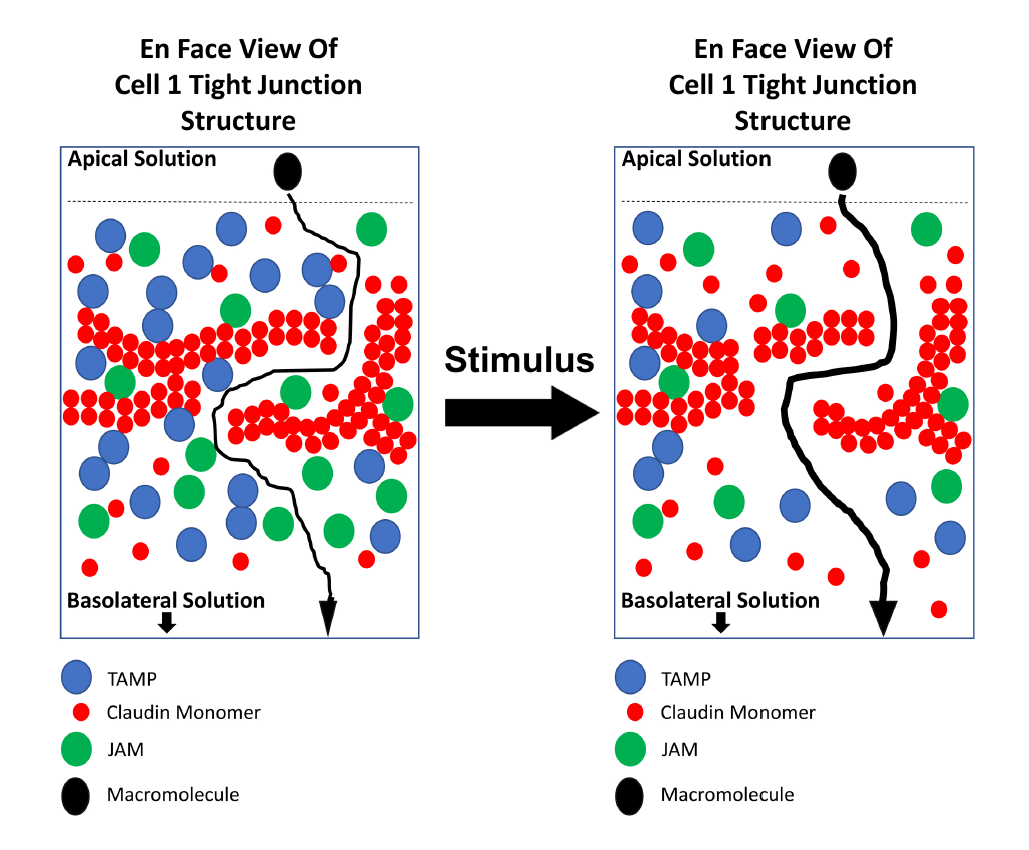The epithelial cell tight junction structure is the site of the transepithelial movement of solutes and water between epithelial cells (paracellular permeability). Paracellular permeability can be divided into two distinct pathways, the Pore Pathway mediating the movement of small ions and solutes and the Leak Pathway mediating the movement of large solutes. Claudin proteins form the basic paracellular permeability barrier and mediate the movement of small ions and solutes via the Pore Pathway. The Leak Pathway remains less understood. Several proteins have been implicated in mediating the Leak Pathway, including occludin, ZO proteins, tricellulin, and actin filaments, but the proteins comprising the Leak Pathway remain unresolved. The properties of the Leak Pathway, such as its molecular mechanism, its regulation, and whether or not it has a size limit, remain controversial. This review will trace the evolution of the Leak Pathway concept from its origins, will discuss the current information about the properties of the Leak Pathway, and will discuss recent research suggesting a possible molecular basis for the Leak Pathway. Based on these findings, we propose a model for the molecular mechanism underlying the Leak Pathway and its regulation.

